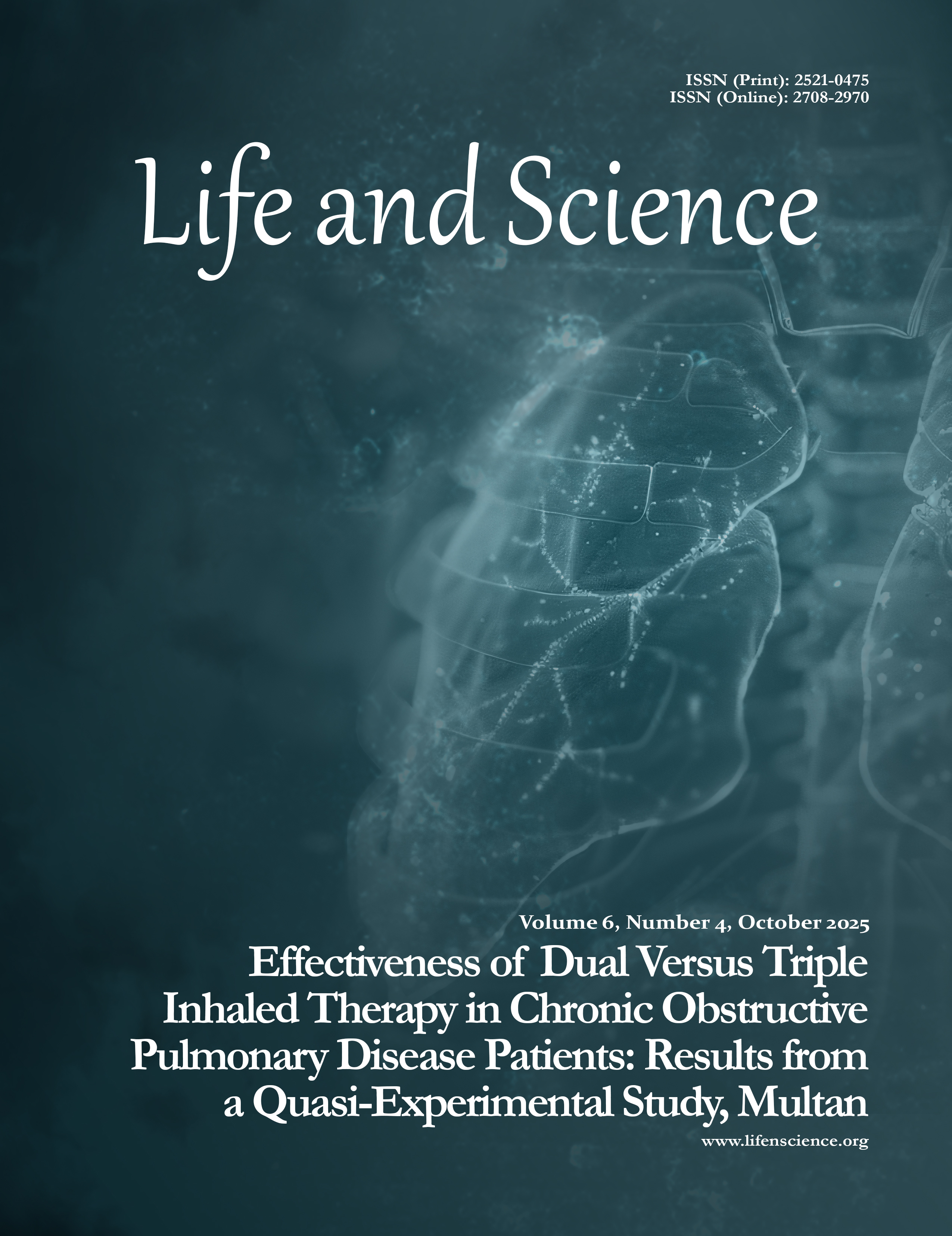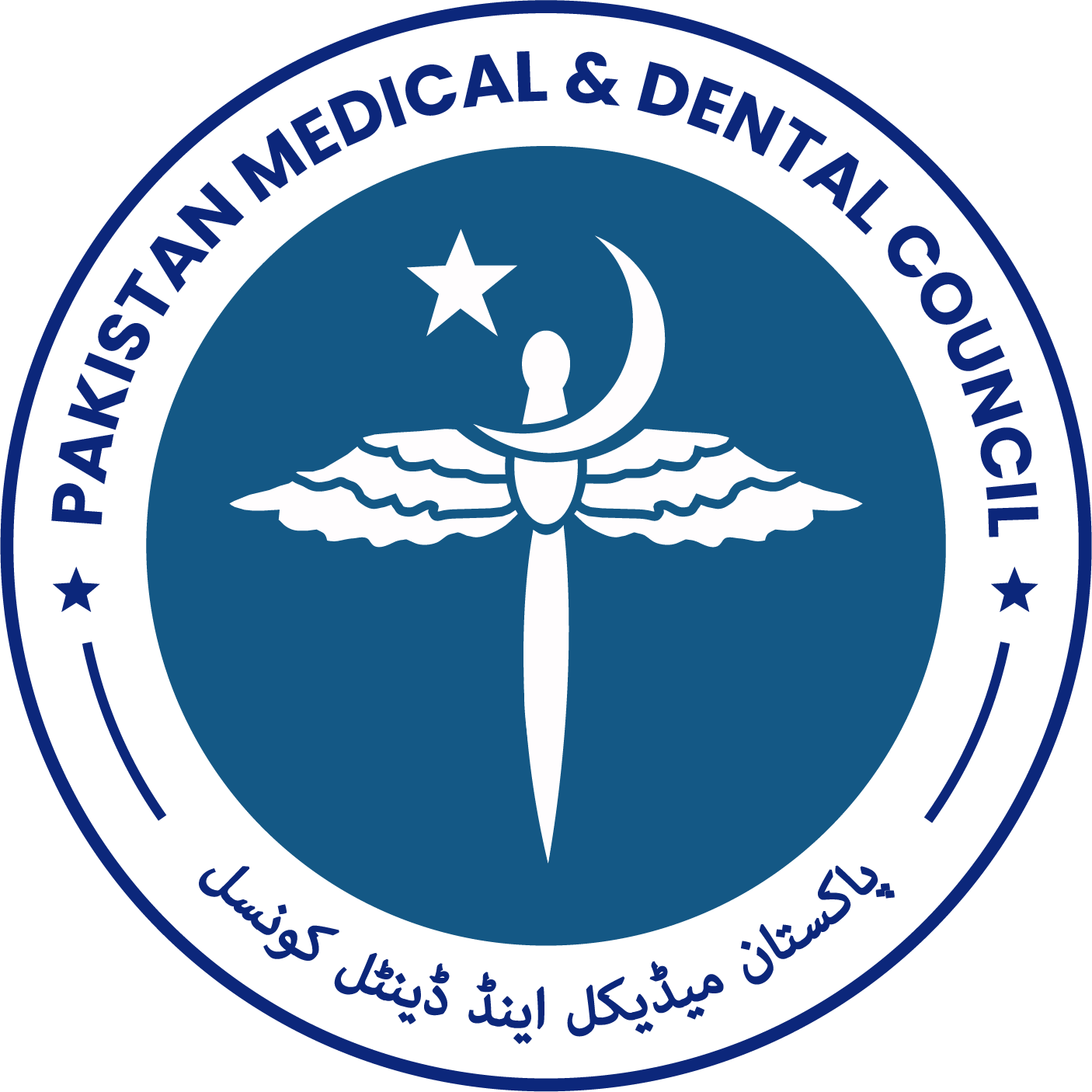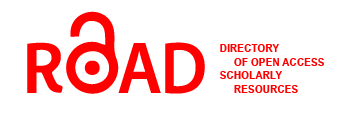Diagnostic Accuracy of the Clinical Assessment of Chorioamnionitis Compared with Histological Findings: A Cross-Sectional Study at Private Healthcare Setting, Multan
Abstract
Objective: To determine the diagnostic accuracy of clinical diagnosis of chorioamnionitis by comparing it with
histopathological findings in a tertiary care hospital setting.
Study Design: A cross-sectional study.
Place and Duration of Study: This study was conducted at the Department of Obstetrics and Gynaecology in
Ibn-e-Siena Hospital, Multan, Pakistan from 3rd July 2024 to 3rd January 2025.
Methods: A total of sixty pregnant women with singleton pregnancies at gestational age >28 weeks, who
fulfilled the clinical diagnostic criteria for chorioamnionitis, were included. Following delivery, placentas were
sent for histopathological examination. The placental tissues were fixed in 10% buffered formalin, processed,
and stained with haematoxylins and eosin. The histological diagnosis of chorioamnionitis was made based on
established microscopic criteria, including the presence of acute inflammatory infiltrates in the chorion,
amnion, or umbilical cord. Data were analyzed using SPSS version 25 to assess diagnostic accuracy and the
predictive value of individual clinical features.
Results: Of 60 clinically diagnosed cases, histological confirmation was observed in 39 (65%), while 21 patients
(35%) did not show histological evidence of infection/inflammation. This reflects a diagnostic accuracy of 65%
for clinical diagnosis compared to the histopathological gold standard. Fetal tachycardia (PPV: 76.2%), foulsmelling vaginal discharge (PPV: 78.6%), and PROM >24 hours (PPV: 78.9%) were strong predictors of
histological chorioamnionitis, significantly increasing the likelihood of actual intra-amniotic infection.
However, clinical features such as maternal tachycardia and uterine tenderness showed moderate predictive
value.
Conclusion: The clinical diagnosis of chorioamnionitis showed a moderate correlation with histological
findings. Incorporating histopathology in diagnostic workups can enhance diagnostic accuracy and help
optimize the management of suspected intra-amniotic infections.
How to cite this: Tauseef H, Haider F, Akhtar F. Diagnostic Accuracy of the Clinical Assessment of Chorioamnionitis Compared with Histological Findings: A Cross-Sectional Study at Private Healthcare Setting, Multan. Life and Science. 2025; 6(4): 504-509. doi: http://doi.org/10.37185/LnS.1.1.968
Copyright (c) 2025 Hafsa Tauseef, Farhana Haider, Faryal Akhtar

This work is licensed under a Creative Commons Attribution-NonCommercial 4.0 International License.

















